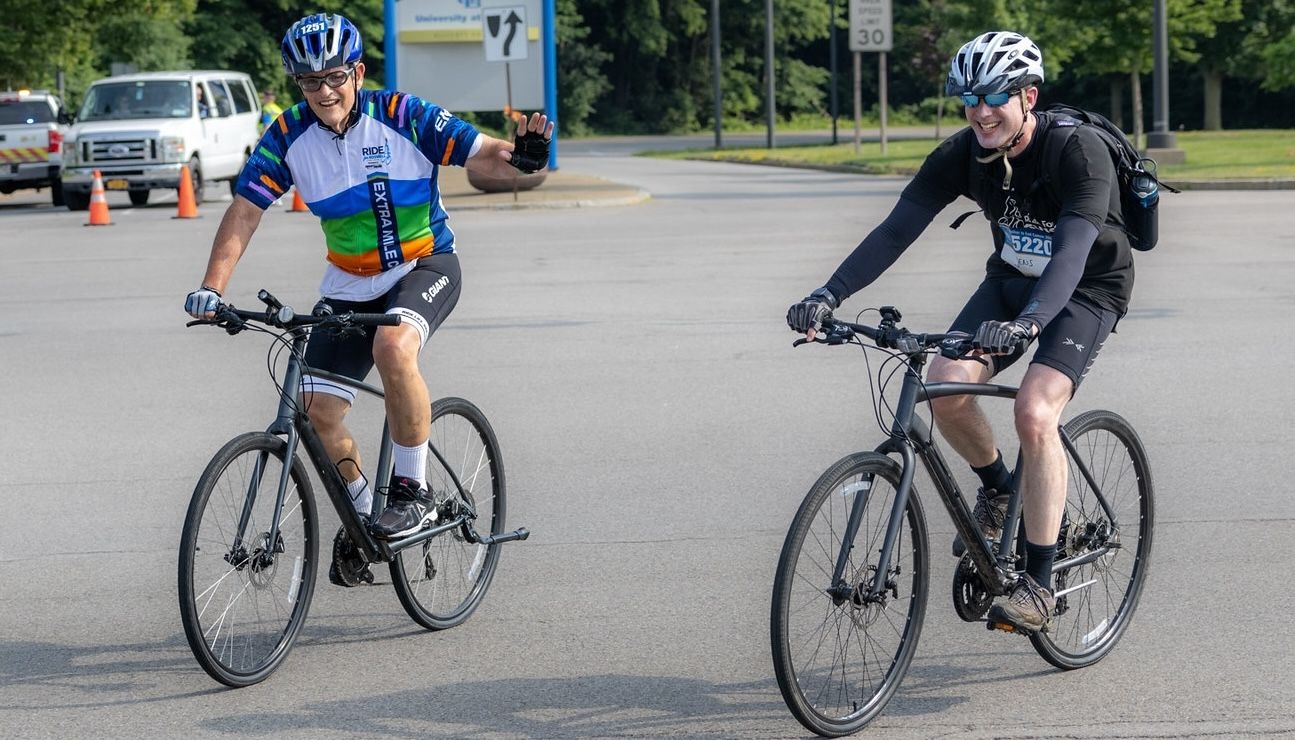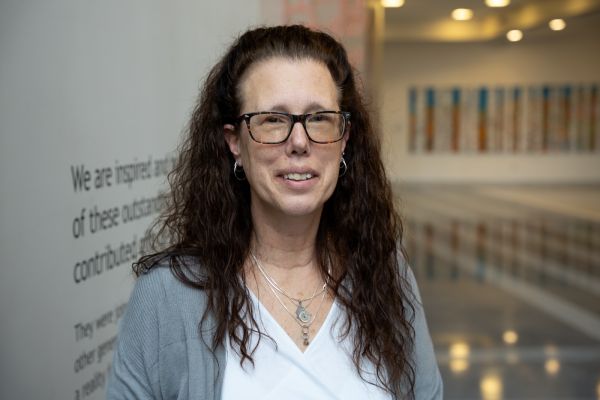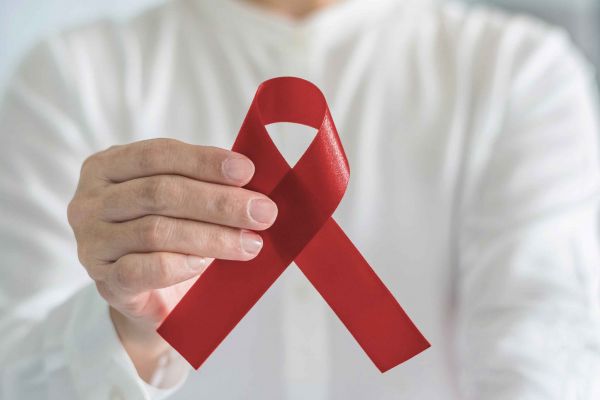From stem cell transplant to road warrior, first-rate cancer care worth the two-hour drive from Syracuse.
Paul Leo had a rough start to his 59th year, receiving a dual diagnosis of multiple myeloma and invasive basal cell carcinoma in quick succession.
“It was the result of an annual physical,” says Paul, a Syracuse resident. “I went to my doctor at the end of October and there was a higher level of proteins in my blood.”
A bone marrow biopsy confirmed excess plasma cells in his bones and an oncologist diagnosed Paul with smoldering multiple myeloma, a precursor to developing the actual malignant disease. Shortly after that, his dermatologist found a carcinoma on his nose that required extensive surgery and reconstruction.
In the meantime, his wife, Maria, started researching multiple myeloma and treatment options for this type of cancer. Paul began working with an oncologist/hematologist in Syracuse but decided to come to Roswell Park Comprehensive Cancer Center in order to access the expertise and treatment options afforded at a National Cancer Institute-designated center.
“We originally thought about going to New York City or Boston, but I thought if this ends up being more serious, and I’ve got to spend a lot of time away, I don’t want my family and my adult children having to visit or travel for a $400 or $500 a night stay in hotel rooms,” he says.
From ‘smoldering’ to needing a transplant
After an initial meeting with Jens Hillengass, MD, PhD, Chief of Myeloma at Roswell Park, and Kimberly Celotto, PA-C, on December 18, 2018, Paul had a second bone marrow biopsy that determined that his plasma cell level was even higher than it was just a few weeks before. His myeloma was still considered “smoldering” at the time, so Paul and Maria made the two-hour drive from Syracuse to Roswell Park every few months for check-ins.
Dr. Hillengass says patients first go through an oftentimes unnoticed phase of smoldering multiple myeloma before they develop the actual disease.
“Because it doesn’t cause symptoms, if you don’t look for it, you won’t find it,” says Dr. Hillengass. “But not everyone develops myeloma. The risk of progression from the smoldering state is at a rate of about 10% per year.”
Paul went from smoldering to “full-blown” myeloma in about two years.
“All of a sudden my plasma cells were at 65%,” he says. “I had all the genetic tests done and I was considered low risk for developing full-blown multiple myeloma, but it happened relatively quickly. I needed a stem cell transplant.
“I went on the pre-chemotherapy treatment of Revlimid (lenalidomide), Velcade (bortezomib) and dexamethasone, what they call the RVD treatment. That was administered by my local oncologist in Syracuse, but Roswell Park was in charge of the treatment, so I was going to Buffalo every three months.”
The first two cycles of RVD knocked his plasma cell count down to 15% but not yet to the desired level of 10% before his transplant.
In January 2021 Paul had his own stem cells extracted for his transplant, a treatment that required a five-week stay in Buffalo. This was during the height of the COVID-19 pandemic, meaning visitors were limited, but friends and relatives donated blood and platelets to help Paul in his recovery.
Following treatment with high-dose chemotherapy and an autologous stem cell transplant, Paul was released from Roswell Park in early March 2021. He was home from the hospital in time to speak with his father before he passed away and was able to speak at his funeral. Another motivating factor in his recovery, Paul was able to walk his daughter down the aisle for her wedding that September.
Why you need a second opinion for your multiple myeloma
Treatment for multiple myeloma has evolved so that targeted therapies and immunotherapies are replacing chemotherapy for many patients - Roswell Park has the experts.
Inspired to participate in the Ride for Roswell
Every three months, Paul would meet with one of his care teams, either in Syracuse or at Roswell Park with Dr. Hillengass. During one of his visits to Buffalo in early 2022, he and Maria saw a large poster for the Ride for Roswell. They thought the idea of riding in support of cancer research was a perfect opportunity to continue his rehabilitation while also funding further cancer treatments, like the CAR T-cell therapies he may need in the future, if his multiple myeloma were to relapse.
Initially, Paul signed up for the 30-mile route along the Niagara River while Maria registered for a shorter 20-mile route for their first go-round in 2022. But when Maria broke her wrist in a biking accident while training just one week before the Ride, Paul ended up doing the event alone that first year. Maria later completed the 10-mile River Route in 2023 and 2024.
In early 2023, Paul learned from Dr. Hillengass of an opportunity to participate in a clinical trial looking at the role exercise can play in cancer recovery. The study was supervised by Dr. Hillengass’ wife, Michaela Hillengass, an exercise trainer in Roswell Park’s Department of Cancer Prevention and Control, and he was quick to agree and sign up. It involves regular group sessions for six months, conducted over Teams video calls, in addition to blood tests and physical therapy measurements, for 12 months.
“Participation is offered to patients who are in a stable condition with their illness," Dr. Hillengass says.
An unexpected riding partner and a milestone
On the morning of this year’s Ride for Roswell, Paul was making good time on his 30-mile route when he noticed another cyclist pulling up alongside him.
“All of a sudden I hear a voice with a German accent coming up on the side,” Paul says. “He told me he was trying to catch his patient for two-and-a-half miles!”
For the rest of the event, Paul and Dr. Hillengass rode side by side, discussing their families, Paul’s treatment and the enthusiasm myeloma doctors now have for CAR T-cell therapies — and finished the Ride together.
“I’m 15 years younger and don’t have myeloma but we ride at about the same pace,” Dr. Hillengass says.
“It’s quite an accomplishment. We want our patients to achieve milestones. We want to give them as much time as possible with a good quality of life. That’s why exercise is so important.”
Paul says he’s better able to keep an exercise routine going now that he’s retired and is feeling the benefits of it. He also just marked two years with no indications of his myeloma returning and says he’s feeling great. Paul takes a daily cancer drug as part of his maintenance treatment.
His quality of life is as high as it’s ever been. That might be due in part to the arrival of his first grandchild earlier this year as much as it is to his dedication to exercising regularly, and to his tests remaining clean more than three years after his transplant.
Editor’s Note: Cancer patient outcomes and experiences may vary, even for those with the same type of cancer. An individual patient’s story should not be used as a prediction of how another patient will respond to treatment. Roswell Park is transparent about the survival rates of our patients as compared to national standards, and provides this information, when available, within the cancer type sections of this website.




